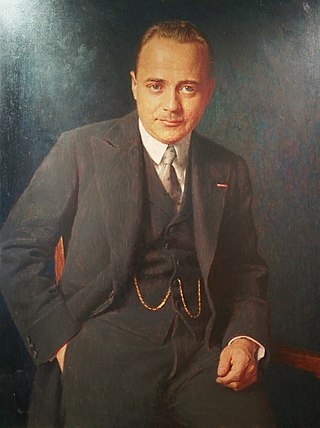
Engelbert Dolfuss was an Austrian politician who served as Chancellor and Dictator of Austria between 1932 and 1934. Having served as Minister for Forests and Agriculture, he ascended to Federal Chancellor in 1932 in the midst of a crisis for the conservative government. This crisis culminated in the self-elimination of the Austrian Parliament, a coup sparked by the resignation of the presiding officers of the National Council. Suppressing the Socialist movement in the Austrian Civil War and later banning the Austrian Nazi Party, he cemented the rule of Austrofascism through the First of May Constitution in 1934. Later that year, Dollfuss was assassinated as part of a failed coup attempt by Nazi agents. His successor Kurt Schuschnigg maintained the regime until Adolf Hitler's Anschluss in 1938.
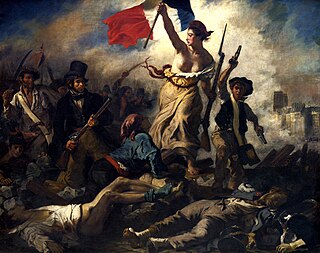
A homeland is a place where a national or ethnic identity has formed. The definition can also mean simply one's country of birth. When used as a proper noun, the Homeland, as well as its equivalents in other languages, often has ethnic nationalist connotations. A homeland may also be referred to as a fatherland, a motherland, or a mother country, depending on the culture and language of the nationality in question.

The Homeland, previously known as the National Democratic Party of Germany, is a far-right Neo-Nazi and ultranationalist political party in Germany.
The Heimwehr or Heimatschutz was a nationalist, initially paramilitary group that operated in the First Austrian Republic from 1920 to 1936. It was similar in methods, organization, and ideology to the Freikorps in Germany. The Heimwehr was opposed to parliamentary democracy, socialism and Marxism and fought in various skirmishes against left-wing and foreign groups during the 1920s and 1930s. Some of its regional groups also opposed Nazism while others favored it. In spite of its anti-democratic stance, the Heimwehr developed a political wing called the Heimatblock that was close to the conservative Christian Social Party and took part in both the cabinet of Chancellor Carl Vaugoin in 1930 and in Engelbert Dollfuss' right-wing government from 1932 to 1934. In 1936 the Heimwehr was absorbed into what was at the time the only legally permitted political party in Austria, the Fatherland Front, and then later into the Frontmiliz, an amalgamation of militia units that in 1937 became part of Austria's armed forces.

Ernst Streeruwitz was an Austrian military officer, businessman, political scientist and politician. A member of the industrialist wing of the Christian Social Party, Streeruwitz served on the National Council from November 1923 to October 1930 and as chancellor and foreign minister from May to September 1929.
Pan-nationalism is a specific term, used mainly in social sciences as a designation for those forms of nationalism that aim to transcend traditional boundaries of basic or historical national identities in order to create a "higher" pan-national (all-inclusive) identity, based on various common denominators. Pan-nationalism can occur as a specific variant of all common forms of nationalism. In relation to classical state nationalism, pan-nationalism manifests itself through various political movements that advocate the formation of "higher" (pan-national) forms of political identity, based on a regional or continental grouping of national states. In terms of ethnic nationalism, pan-nationalism can also manifest itself through specific ethnic movements that advocate setting up "higher" (pan-national) forms of common identity that are based on ethnic grouping. Other forms of nationalism also have their pan-national variants.

The Austrian Civil War of 12–15 February 1934, also known as the February Uprising or the February Fights, was a series of clashes in the First Austrian Republic between the forces of the authoritarian right-wing government of Engelbert Dollfuss and the Republican Protection League, the banned paramilitary arm of the Social Democratic Workers' Party of Austria. The fighting started when League members fired on the Austrian police who were attempting to enter the Social Democrats' party headquarters in Linz to search for weapons. It spread from there to Vienna and other industrial centres in eastern and central Austria. The superior numbers and firepower of the Austrian police and Federal Army quickly put an end to the uprising. The overall death toll is estimated at 350.
Heimat is a German word translating to 'home' or 'homeland'. The word has connotations specific to German culture, German society and specifically German Romanticism, German nationalism, German statehood and regionalism so that it has no exact English equivalent. The word describes a state of belonging "the opposite of feeling alien," and its definition is not limited to a geographical place.
Heimatfilme were films of a genre popular in Germany, Switzerland, and Austria from the late 1940s to the early 1960s. Heimat can be translated as "home", "hometown" or "homeland".
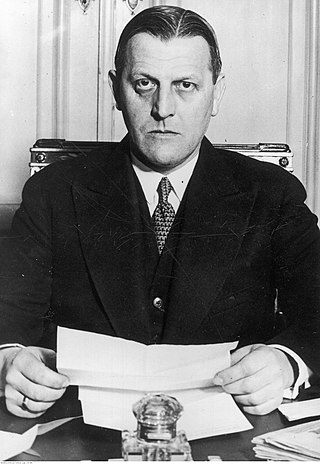
Emil Fey was an officer in the Austro-Hungarian Army, leader of the right-wing paramilitary Heimwehr forces and politician of the First Austrian Republic. He served as Vice-Chancellor of Austria from 1933 to 1934, leading the country into the period of Austrofascism under Chancellor Engelbert Dollfuß. Fey played a vital role in the violent suppression of the Republikanischer Schutzbund and, during the 1934 Austrian Civil War, of the Social Democratic Workers' Party.
Volkstum is the entirety of utterances of a Volk or of an ethnic minority over its lifetime, expressing a "Volkscharakter" which the people of such an ethnicity allegedly have in common. It was the defining idea of the Völkisch movement.
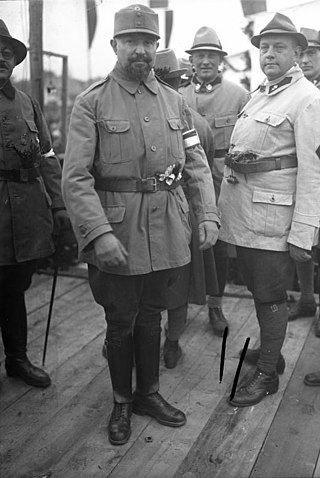
Walter Pfrimer was an Austrian politician and leader of the Heimwehr in Styria. He was the leader of a failed putsch in 1931.

Richard Steidle was an Austrian lawyer and the leader of the paramilitary Heimwehr in Tyrol. He was a leading representative of the pro-independence tendency on the far right of Austrian politics and as such was opposed to the Nazi Party which supported the incorporation of Austria into a Großdeutschland. Following the Anschluss, Steidle was sent to the Buchenwald concentration camp, where he was killed in 1940.
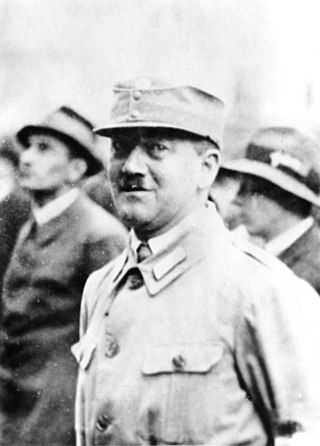
Ernst Julius Waldemar Pabst was a German soldier and political activist who was involved in extreme nationalist and anti-communist paramilitary activity in both the Weimar Republic and in Austria. As a Freikorps officer, Captain Pabst gained notoriety for ordering the summary executions of Karl Liebknecht and Rosa Luxemburg in 1919 as well as for his leading role in the attempted coup d'etat by Wolfgang Kapp. In Austria, he played a central part in organising rightist militia groups before being deported for his activities. Pabst subsequently faded from public life in Nazi Germany, as he was never more than loosely associated with the Nazis.
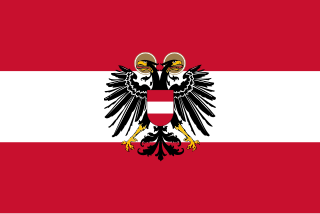
The Federal State of Austria was a continuation of the First Austrian Republic between 1934 and 1938 when it was a one-party state led by the conservative, nationalist, and corporatist Fatherland Front. The Ständestaat concept, derived from the notion of Stände, was advocated by leading regime politicians such as Engelbert Dollfuss and Kurt Schuschnigg. The result was an authoritarian government based on a mix of Italian Fascist and conservative Catholic influences.

Prince Ernst Rüdiger Camillo von Starhemberg, often known simply as Prince Starhemberg, was an Austrian nationalist and politician who helped introduce Austrofascism and install a clerical fascist dictatorship in Austria in the interwar period. A fierce opponent of Anschluss, he fled Austria when the Nazis invaded the country and briefly served with the Free French and British forces in World War II.

German nationalism is a political ideology and historical current in Austrian politics. It arose in the 19th century as a nationalist movement amongst the German-speaking population of the Austro-Hungarian Empire. It favours close ties with Germany, which it views as the nation-state for all ethnic Germans, and the possibility of the incorporation of Austria into a Greater Germany.
Walther Schoenichen was a German biologist and a prominent proponent of nature conservation within Nazi Germany.

Heimatschutz Architecture, or the Heimatschutzstil or Heimatstil is a style of architectural modernism that was first described in 1904 and had its prime until 1945. Various buildings were built after the war until around 1960. The main areas of work were settlement building, house building, garden design, industrial building, church building and monument preservation.

Ernst Karl Winter was an Austrian sociologist, journalist and political activist.














